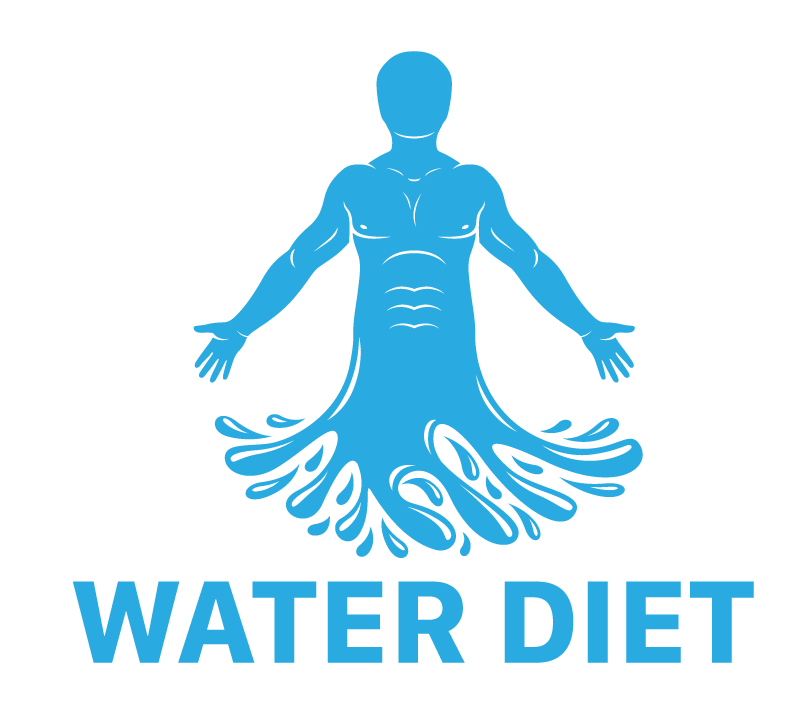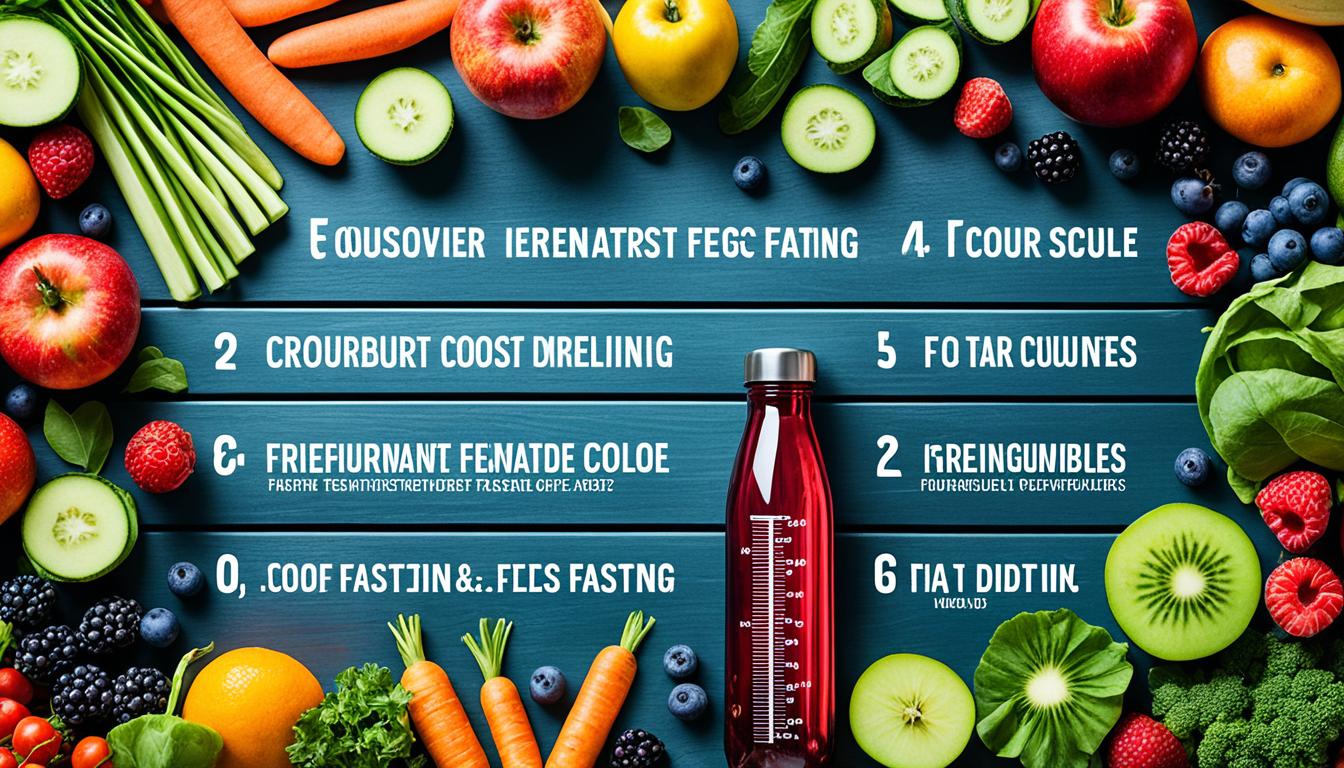Many people look for ways to improve their health and wellness. This includes trying different dietary plans like water fasting. This water fasting guide is your beacon of knowledge. It shows you how to dive into this diet method smoothly. The key thing about a water fasting diet chart is its simplicity. This guide will help you blend it into your life easily. It’s not just about losing weight. It’s also about feeling more alive and healthy.
This guide covers everything you need to know about water fasting. We dig into the science behind why it’s such a hot topic. Whether you want to cleanse your body, boost your metabolism, or try a simple diet, this guide has valuable information. It will help you improve your health wisely.
Understanding Water Fasting and Its Ascending Popularity
Water fasting is becoming more popular. It’s simple and can deeply affect one’s health. It means not eating or drinking anything but water to improve health.
Defining Water Fasting
Water fasting means you only drink water. No other food or drinks are allowed. It can last from one day to several days, depending on what you want to achieve and your health.
Potential Health Benefits
Water fasting is known for several benefits. These include detoxing the body, reducing calories, and improving mental sharpness. These benefits have caught the attention of both health fans and researchers.
- Detoxification of the body
- Caloric reduction and possible weight loss
- Promotion of mental clarity and focus
Cautions and Contraindications
Water fasting has benefits, but being careful is key. Doing it too much or wrongly can cause health issues like electrolyte imbalance and lack of nutrients. Here’s a table with precautions to keep in mind before starting a water fast.
| Precaution | Description | Significance |
|---|---|---|
| Medical Consultation | Scheduling an appointment with a healthcare provider | Ensures suitability and safe practice |
| Hydration Monitoring | Observing signs of ample hydration | Prevents water intoxication |
| Electrolyte Balance | Maintaining necessary mineral levels | Avoids complications such as hyponatremia |
| Duration Considerations | Aligning fasting period with health status | Customizes the fast to individual needs |
Following these guidelines helps avoid the risks of water fasting. This ensures people can enjoy its advantages without harming their health.
Preparing Your Body for a Water Fast
Starting a water fasting schedule takes more than just willpower. It requires careful prep to get your body ready. Moving into a fasting state gradually helps, based on steps taken before. To make your water fast safe and effective, follow these key water fasting tips.
Ease your body into fasting with some prep work. Start by taking hemp seed oil about 48 to 36 hours before you begin. This step helps shift your metabolism, lowering insulin and increasing ketone levels. Such changes can start in just 12 hours. This metabolic shift helps your body use its fat for energy, entering a fat-burning state. By the 24-hour mark, your cells begin a deep cleaning process called autophagy, which rejuvenates your body’s cells.
- Educate Yourself: Get to know the effects and stages of a water fast. It helps you prepare mentally.
- Hydrate: Drink more water before the fast to avoid dehydration early on.
- Reduce Caffeine and Sugar: Less caffeine, sugar, and processed food cuts down on withdrawal symptoms.
- Health Professional Consultation: Check in with a healthcare provider to customize the fast for your health needs and goals.
- Prepare for Downtime: Plan a light schedule to reduce stress during the fast. Resting is crucial.
Water fasting doesn’t work the same for everyone. Experiences can vary a lot. So, following a tailored water fasting schedule and these water fasting tips makes your fast safer and more effective. The goal is to finish the fast feeling renewed and having had a positive journey.
Creating Your Water Fasting Diet Chart
Starting a water fast for weight loss needs careful planning. It’s not just skipping meals; it requires a detailed plan tuned to your health and goals. Before jumping into a water fasting plan, think about many factors that make fasting safe and successful.
Initial Considerations for Chart Development
First, think about your health and weight loss goals. Knowing what your body needs helps create a fasting plan. This plan will not only reach your targets but also keep you healthy.
24-Hour Fasting Schedule Overview
A 24-hour fast means no calories, just water. But a good plan also prepares your body before the fast and guides you on how to start eating again afterward:
| Preparation Phase | Fasting Phase | Refeeding Phase |
|---|---|---|
| Decrease caloric intake | 24-hour water-only intake | Gentle food reintroduction |
| Hydration focus | Monitor hydration levels | Easy-to-digest foods |
| Mindful relaxation | Mental and physical rest | Progressive nutritional balance |
Tailoring the Fasting Window to Individual Needs
Adjusting the fasting period is key to fitting your lifestyle. It might mean fasting for shorter or sometimes longer times. The goal is to make water fasting doable and beneficial for your weight loss and health in the long run.
Analyzing Water Fasting Results: What to Expect
Starting a water fast can change your life. People explore water fasting benefits with hopes and questions. They want to know what results they’ll see. By understanding how the body adapts and watching the changes, you can fast safely. This way, you’ll get the most from this practice.

The Initial Adjustment Period
When you start a water fast, your body begins to adjust. It switches from using glucose for energy to burning fat. You might feel a ‘keto flu’ during this time. This comes with headaches, tiredness, and feeling dizzy. Knowing how to do a water fast the right way helps handle these symptoms.
Signs of Ketosis and Fat Burning
As the fast continues, you’ll see signs that your body is in ketosis. This means your body is burning fat. You may notice more energy, clear thinking, and less hunger. These signs show your body is in a good state for fasting benefits.
Monitoring Your Body’s Response
It’s key to watch how your body reacts to the fast. Some see less swelling or feel better overall. When learning how to do a water fast, watch out for bad signs. These might mean you should stop fasting or talk to a doctor.
| Timeframe | Physical Signs | Mental Signs | Actionable Steps |
|---|---|---|---|
| 24-48 Hours | Hunger, slight fatigue | Desire for food, irritability | Maintain hydration, rest as needed |
| 2-7 Days | Headaches, ketosis begins | Mental clarity, reduced appetite | Continue electrolyte balance, monitor ketone levels |
| 7+ Days | Weight loss, reduced inflammation | Stable energy, enhanced focus | Consult health professional for guidance |
Choosing to fast with water can bring many health benefits. But remember, everyone’s experience is different. A personal approach is key. Know the signs, both good and bad, and when to take action. This is crucial for a beneficial water fast.
Incorporating Water Fasting into Your Lifestyle
Adding a water fasting schedule to your daily life needs careful planning. It should fit with your lifestyle and energy needs. Beginning a fast is a long-term effort. It involves making small changes that match your health goals and everyday duties. Having the right water fasting tips helps you start this path with sureness. It’s important to make fasting work with your normal eating habits. This avoids health problems and keeps your energy stable for daily tasks.
If you want to include water fasting in your life, follow these steps:
- Talk to a healthcare expert to get a fasting plan that fits your health and life.
- Start with short fasts to let your body adjust. Then, slowly increase the time as you feel more at ease.
- Keep a diary to note your fasting times and how your body reacts. Adjust based on what you learn and how you feel.
- Keep an eye on how much water you drink. Always listen to your body, and stop fasting if you feel bad.
It’s also good to picture what a water fasting plan might look like during a week. Check out the Water Fasting Weekly Planner below:
| Day | Fasting Window | Activity Level | Post-Fasting Nutrition Tips |
|---|---|---|---|
| Monday | 16 hours | Light | Finish fasting with a meal full of fiber and protein. |
| Wednesday | 18 hours | Moderate | Don’t eat heavy right after fasting. Choose smoothies or soups instead. |
| Friday | 12 hours | High | Drink lots and eat a small, nutrient-rich meal after fasting. |
| Sunday | 24 hours | Low | End fasting with light meals like salads, fruits, and plenty of water. |
Everyone’s water fasting schedule varies with their health and life. These water fasting tips are a basic guide. They help safely add fasting into your life.
Post-Fasting: Safely Reintroducing Food
Getting back to eating after water fasting is key. It helps keep the fasting benefits. Plan your meals to ease into eating regular foods.
Planning the Refeeding Phase
Starting with small, light foods is best for your stomach. Stuff like broths and cooked vegetables are good starters. Then, you can slowly add more varied foods.
Choosing the Right Foods After a Fast
After fasting, pick foods that are full of nutrients. The Mediterranean diet, with fruits, veggies, and lean proteins, is ideal. It helps keep the fasting benefits going strong.
Maintaining Long-Term Benefits Post Fast
For lasting health benefits, eating right is crucial. A meal plan made for after fasting can guide your diet later on. This way, you’ll keep the health gains you made.

| Day | Meal | Food Type | Portion Size |
|---|---|---|---|
| 1 | Breakfast | Broth | 1 Cup |
| 1 | Lunch | Cooked Vegetables | 1/2 Cup |
| 1 | Dinner | Soft Fruit | 1 Small Piece |
| 2 | Breakfast | Yogurt | 1/2 Cup |
| 2 | Lunch | Lean Protein | 3 oz |
| 2 | Dinner | Whole Grains | 1/2 Cup |
Who Should Avoid Water Fasting: Health Considerations
Water fasting for weight loss is gaining attention. Yet, it’s not suitable for everyone. Specifically, people with serious health issues should not try it. For example, underweight individuals could harm their health more by missing out on essential nutrients. Also, those with heart problems might find fasting too stressful.
People with type 1 diabetes need to be very careful if considering water fasting. Their blood sugar could swing dangerously without regular meals. Also, if you’re receiving treatments like blood transfusions, fasting could disrupt your body’s balance. Medications that need to be taken with food are another concern.
It’s important to talk with a doctor before starting a water fast. They can offer advice based on your health needs. A doctor will help make sure your weight loss plan is both safe and effective. Always consider your health first if thinking about water fasting to improve wellness.




